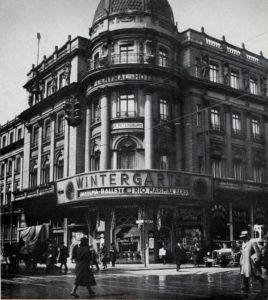Tsingtao Drug Dealers in 1920s Berlin
Posted: November 15th, 2017 | 2 Comments »Talking on Norman Ohler’s Blitzed: Drugs in Nazi Germany yesterday I note another claim he makes – in Berlin’s Friedrichstraße in the 1920s (below) Chinese drug dealers from Tsingtao (Qingdao) ran opium dens. This of course is possible – Friedrichstraße did have some opium dens at that time apparently though who ran them I don’t know. Of course Tsingtao was a former German leased territory in Shandong before WW1 and its seizure by Japan. However, Ohler doesn’t provide a reference for that juicy morsel of information and I can find no other reference to Tsingtao dealers in Berlin in English anywhere – any Berlin experts, German researchers know different?

Not Berlin, but in Hamburg’s Chinatown (Hamburger Chinesenviertel), which lasted until 1944, when the Nazis arrested & interned the residents, who were a mix of sailors, businesspeople, and migrants. There are records of yearslong opium imports, and at least two Opiumhöhle, opium dens raided in 1921.
All in German, but Google Translate does ok:
https://de.wikipedia.org/wiki/Opiumhöhle#Opiumh.C3.B6hlen_in_Hamburg
Hamburg’s St. Pauli district was also named as a site of opium dens and smuggling:
http://www.unter-hamburg.de/tunnel_unter_st__pauli.344.0.html
Some sources are in Fritz Redlich, “Rauschgifte und Suchtenâ€; and Peter Selling, “Zur Geschichte des Umgangs mit Opiatenâ€, but don’t seem easily available.
German spelling for Qingdao at the time was Tsingtau, and the colony concession was Deutsches Pachtgebiet Kiautschou. Deutsches Historisches Museum in Berlin has a pretty good archive, some of which was in their 2017 exhibition, Deutscher Kolonialismus: http://www.dhm.de/ausstellungen/archiv/2016/deutscher-kolonialismus.html. It mostly focussed on the African colonies, but there was some on China and the Pacific, and immigration to Germany.
Berlin did have a small Chinese and Cantonese population in the early-1900s, there’s some references to “Gelben Quartier†(Yellow Quarter) around Schlesischer Bahnhof, currently called Ostbahnhof, and show venues around Friedrichstr (on Behrenstr.). But the only actual reference to an opium den in 1900s Friedrichstr. I’ve seen was in Hans-Rainer Sandvoß’ “Widerstand 1933 – 1945 in Kreuzbergâ€, which mentions Puttkammer-, Besselstrs.; and in Erich Gütinger’s “Die Geschichte der Chinesen in Deutschland†(probably the most detailed source of the lot), but many of the streets and places changed names more than once.
And I must also mention Dr. Phil. Feiqing Huang at TU Berlin for her “Schulerfolg und Akkulturation von Kindern und Jugendlichen chinesischer Herkunft – Eine Sondierung familiärer Einflussfaktoren”, 2010.